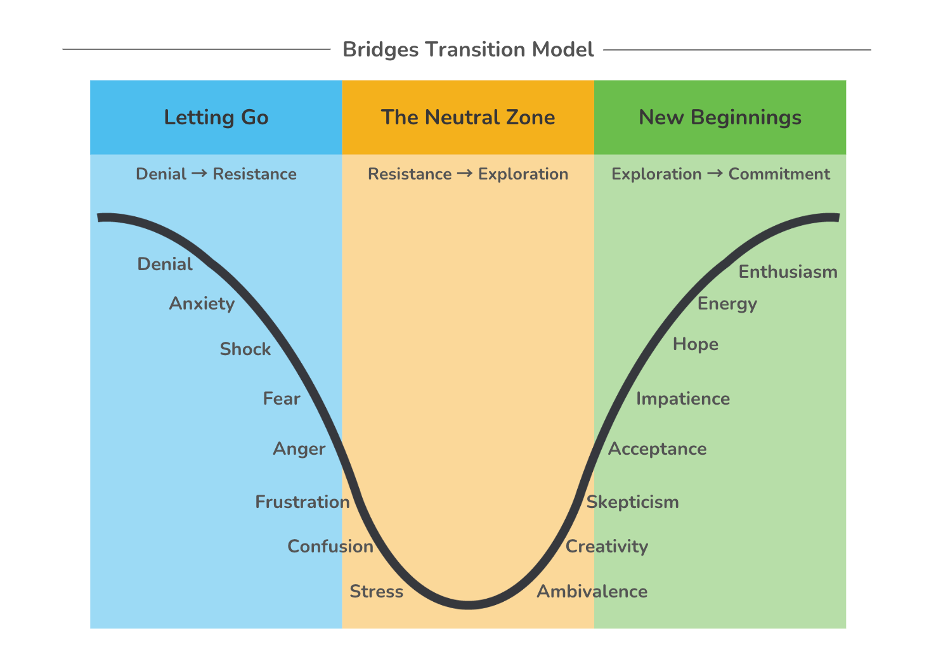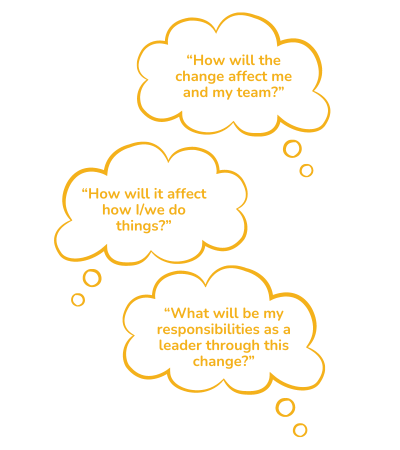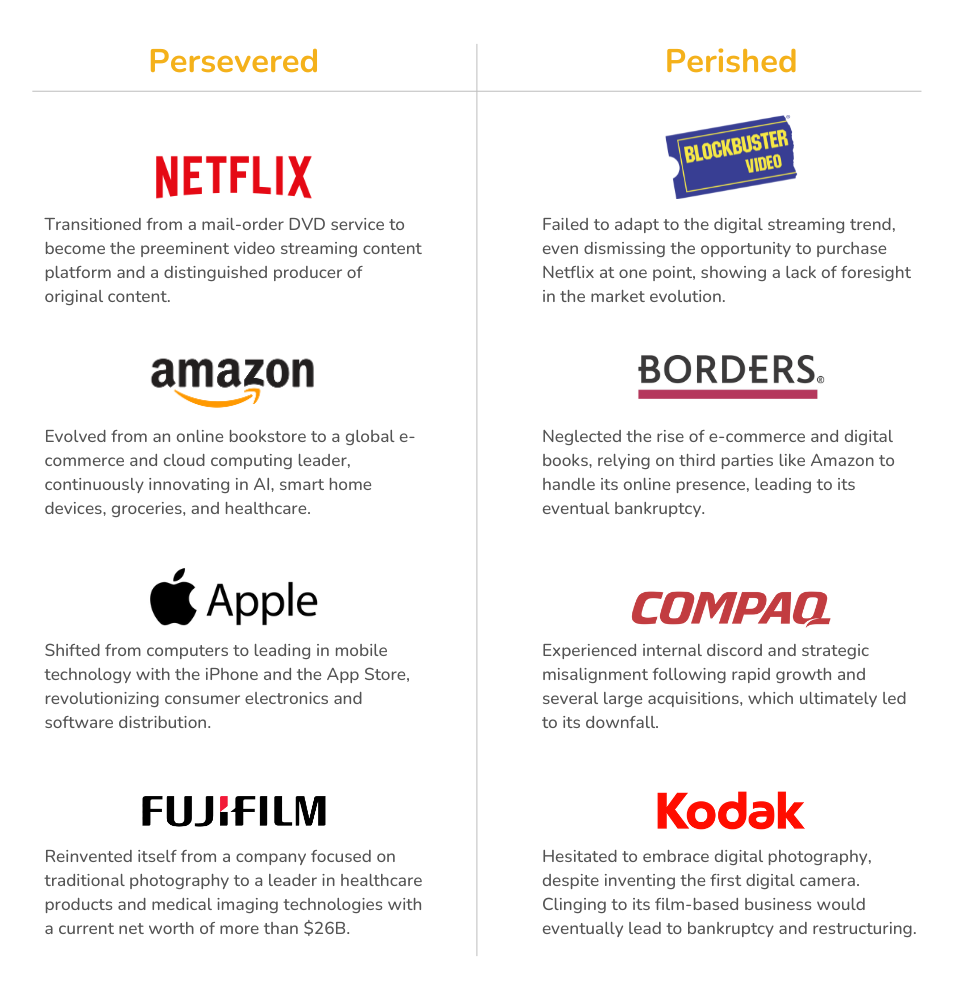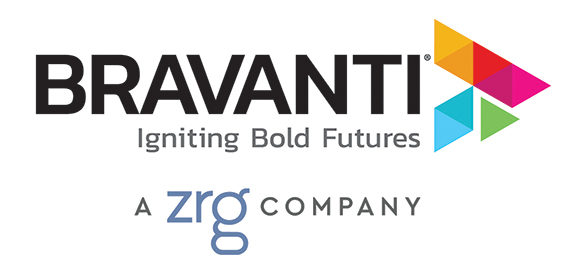 This is part of a series where we examine the role of resilience in individual, team, and organizational success. For a deeper dive, download our latest white paper, The Executive’s Guide to Resilience: Insights & Strategies for Leading Through Change.
This is part of a series where we examine the role of resilience in individual, team, and organizational success. For a deeper dive, download our latest white paper, The Executive’s Guide to Resilience: Insights & Strategies for Leading Through Change.
In today’s business landscape, change is the only constant. Whether driven by technological advancements, market shifts, or evolving customer demands, organizations must continuously adapt to stay competitive. Yet, despite its inevitability, change remains one of the most challenging aspects of leadership. For leaders at every level—whether you’re steering a global corporation from the C-suite or guiding a team as a senior executive—managing change effectively is a critical skill.
What’s important to note is that change is more than just a series of new initiatives or altered processes. It is a deeply human experience that involves transitions—those psychological and emotional shifts that occur when individuals, teams, and organizations move from the old to the new. Understanding and navigating these transitions is where true leadership shines, and it is here that resilience plays a pivotal role.
Building resilience is not a new or passing trend; it is a universally accepted precondition to thriving in modern business. But resilience is more than simply one’s ability to navigate change and recover from setbacks; its the capacity to continuously evolve and thrive amid disruption.
This blog post will explore the intricate relationship between change and resilience, offering insights and strategies to help you turn the challenges of change into opportunities for growth.
What is Change?
Change, in the organizational context, refers to any alteration or adjustment that impacts a company’s structure, operations, reputation, and/or culture. These changes can be driven by a myriad of internal or external factors, including technological innovation, market demands, regulatory shifts, or internal strategic decisions. For leaders, the ability to manage and lead through change is not just a desirable skill—it’s essential.
Understanding change requires more than recognizing its external manifestations. It’s crucial to differentiate between change and transition, two terms often used interchangeably but with distinct meanings in leadership and organizational development.
Change vs. Transition
Change is the external event or situation that alters the status quo. It is often concrete, with clear start and end points, and it typically involves tangible outcomes such as new policies, processes, or structures.
On the other hand, transition is the internal, psychological process that individuals go through as they adapt to the change. Unlike change, which is often swift and decisive, transition is gradual and can be emotionally complex. It encompasses the emotional and cognitive shifts that people must make to accept and integrate the new reality.

What’s important to note is that just because change occurs, it doesn’t mean that organizations and people successfully transition. Understanding the distinction between change and transition, as well as the process for successfully leading a transition, is critical to change management. Organizations and leaders that fail to recognize this often fail to navigate change successfully.
William Bridges, a leading expert on change management, designed the Bridges Transition Model to illustrate how successful change management requires leaders to guide their teams through the stages of transition: 1) Letting go of the old, 2) Managing the uncertainty of the ‘neutral zone,‘ and 3) Embracing new beginnings.

In this process, leaders foster an environment where change resistance is accounted for and intentional planning provides the space and resources needed for employees to move from denial and resistance to exploration and commitment.
In leading this campaign, resilient leaders can transform the challenge of transition into a journey of collective empowerment and sustainable progress, enabling every member to contribute to and benefit from the shared growth.
Why is Change Difficult?

Change, despite being a constant in the business world, is often met with resistance. This resistance is rooted in human psychology and one of the primary reasons change is difficult is the disruption it causes to established routines and comfort zones. People naturally gravitate towards stability and predictability. When these are threatened, it can provoke feelings of fear, anxiety, and uncertainty
Moreover, change often requires individuals to let go of something familiar—whether it’s a process they have mastered, a role they have become comfortable in, or even relationships within the organization. This sense of loss, however subtle, can be challenging to overcome. Leaders must acknowledge this reality and address the emotional responses that accompany change.
Additionally, the cognitive load change imposes can be overwhelming. Adapting to new ways of working requires learning new skills, altering long-standing habits, and constantly re-evaluating and adjusting to new information. This can lead to fatigue and burnout if not managed effectively.
Understanding these dynamics is the first step for leaders who want to successfully navigate change within their organizations. By recognizing the distinction between change and transition and being mindful of the inherent challenges, leaders can better support their teams through periods of transformation, paving the way for a more resilient and adaptable organization.
Understanding Resilience in the Context of Change
Resilience, particularly in the business world, is often defined as the ability to recover from setbacks, adapt well to change, and keep going in the face of adversity. However, in the context of organizational change, resilience is much more than just bouncing back—it’s about moving forward with a sense of purpose and a clear vision, despite the challenges and uncertainties that change inevitably brings.
The Nature of Resilience
At its core, resilience is a dynamic process that involves positive adaptation within the context of significant adversity. It’s not a fixed trait that some people have and others do not; rather, it’s a set of behaviors, thoughts, and actions that can be developed and strengthened over time. For leaders, fostering resilience within their teams means cultivating an environment where individuals feel supported in taking risks, learning from failures, and maintaining a focus on long-term goals despite short-term disruptions.
In the face of change, resilience allows leaders and their teams to maintain stability while also being flexible enough to adapt to new circumstances. It involves a combination of mental toughness, emotional intelligence, and a proactive mindset that not only responds to change but anticipates it, preparing the organization to thrive in a rapidly shifting environment.
Resilience as a Strategic Advantage
Resilience is a strategic asset. Organizations that foster resilience are better equipped to handle the pressures of change, minimizing the risk of disruption and maintaining operational continuity. Resilience enables leaders to guide their teams through the uncertainty and turbulence of change, ensuring that the organization can not only survive but also seize new opportunities that arise in the process.
Moreover, resilient organizations tend to have higher levels of employee engagement and satisfaction, as individuals feel more capable and empowered to deal with challenges. This, in turn, leads to a more positive workplace culture, where innovation and collaboration are encouraged, and where employees are more likely to contribute to the organization’s long-term success.
The Relationship Between Change & Resilience
Change and resilience share a dynamic relationship similar to that of exercise and physical health. With fitness, regular exercise builds physical strength and endurance while simultaneously requiring a baseline level of health to perform effectively. The relationship between change and resilience is similar in that change acts as a catalyst that both builds and requires resilience.
Navigating change effectively demands a resilient mindset; leaders must have the ability to adapt, recover, and learn from challenges. At the same time, facing and managing these changes builds further resilience, creating a virtuous cycle. Each successful adaptation to change strengthens an individual’s capabilities, making them better prepared for future disruptions.
This dynamic relationship ensures that organizations not only survive but thrive by turning potential threats into opportunities for growth and innovation. Just as physical muscles grow stronger with the stress and recovery cycles of exercise, the ‘change muscle’ strengthens with each challenge it overcomes.
Persevere or Perish: Lessons in Resilience
In the face of relentless change, organizations have two options: persevere or perish – and resilience is often the defining factor that determines which path they will follow. History shows that organizations with a resilient mindset can turn adversity into opportunity, while those that fail to adapt risk obsolescence.
Examining the household names of today against those of decades prior creates a clear and compelling picture of what resilience can do for business continuity in the midst of constant disruption.

The key lesson is clear—resilience isn’t just a nice-to-have; it’s a necessity for survival and success in today’s ever-changing business landscape.
The Role of Leadership in Building Organizational Resilience
Leadership is the cornerstone of organizational resilience. In times of change, leaders’ actions and attitudes have a profound impact on how the organization responds to challenges. Effective leaders not only guide their teams through uncertainty but also actively cultivate the resilience needed to thrive in such environments.
Modeling Resilience
Leaders must exemplify resilience through their actions—staying composed under pressure, making informed decisions in uncertainty, and maintaining a positive outlook. This behavior sets a standard, encouraging similar resilience throughout the organization.
Creating a Supportive Environment
A resilient organization thrives on trust and open communication. Leaders should cultivate a culture of psychological safety, where employees feel comfortable voicing concerns and learning from mistakes. This environment enhances the team’s ability to handle change effectively.
Providing Resources and Training
Leaders need to equip their teams with the necessary tools and training to build resilience. This includes access to resilience coaching, stress management workshops, and continuous learning opportunities, ensuring employees are prepared to face challenges head-on.
Empowering Decision-Making
Empowering employees to make decisions fosters resilience by promoting initiative and adaptability. Leaders can support this by delegating responsibilities and encouraging independent problem-solving, which strengthens the team’s capacity to manage change.
Encouraging a Growth Mindset
Promoting a growth mindset is key to resilience. Leaders can foster this by reframing challenges as learning opportunities and celebrating progress. This mindset helps teams view change as a chance for growth rather than a threat.
In essence, all these actions collectively strengthen the organization’s ability to navigate and leverage change.
Strategies for Managing Change & Building Resilience
Successfully navigating change and building resilience go hand in hand. The following strategies provide actionable steps for leaders to manage change effectively while fostering resilience within their organizations.
1. Assess Your Culture
To manage change effectively, it’s crucial to assess your organization’s culture. Understanding the existing norms, values, and behaviors helps identify potential friction points and areas of alignment with the planned changes. This will allow you to tailor your approach to change management, ensuring that the strategies you implement resonate with your organization and foster a smoother transition.
2. Communicate Clearly and Consistently
Transparent communication is crucial during change. Leaders should provide clear, consistent updates to minimize uncertainty and reduce anxiety. This involves sharing the “what” and “why” of changes and also addressing concerns and questions from the team. Regular communication builds trust and helps employees feel more secure, which is essential for resilience. 💡 Tip: Download our change communications checklist >
3. Involve Employees in the Process
Engage employees early in the change process by involving them in decision-making and implementation. This participation fosters a sense of ownership and empowerment, making employees more resilient to change. When people feel that their input is valued, they are more likely to support the change and adapt quickly.
4. Level-Up With Resilience Coaching
Enlist a resilience coach to accelerate individual resilience. In addition to the proven benefits of building psychological capital, coaching offers a supportive environment for leaders to explore their responses to change, overcome barriers, and create actionable strategies to develop the skills needed to adapt to new challenges and thrive in uncertainty. Not only does the leader benefit from the positive impact of coaching, but through their growth, they act as catalysts for change, demonstrating resilient mindsets and behaviors for their teams and others throughout the organization.
5. Focus on Quick Wins
Identify and prioritize quick wins—small, achievable goals that can be accomplished early in the change process. These quick wins demonstrate progress and build momentum, which can boost morale and reinforce a resilient mindset among team members.
6. Provide Continuous Learning Opportunities
Offer training and development programs that equip employees with the skills they need to adapt to new situations. Continuous learning fosters a growth mindset, helping employees view change as an opportunity for personal and professional development rather than a threat.
7. Foster a Supportive Culture
Create a culture where support systems are in place, such as peer mentoring, coaching, and regular feedback sessions. A supportive environment helps employees manage stress, encourages collaboration, and builds collective resilience, ensuring that the organization can navigate challenges as a unified team.
8. Build Flexibility into Your Plans
Flexibility is key to resilience. Leaders should build adaptability into their change management plans, allowing for adjustments as new information or challenges arise. This proactive approach helps the organization stay agile and resilient in the face of unforeseen obstacles.
9. Recognize and Celebrate Resilience
Acknowledge and celebrate examples of resilience within your team. Recognizing employees who adapt well to change reinforces the importance of resilience and motivates others to embrace similar behaviors. Publicly celebrating these successes can also strengthen organizational culture and morale.
By implementing these strategies, leaders can effectively manage change while simultaneously building a resilient organization that will emerge stronger on the other side of change.
The Path Forward: Making Resilience a Strategic Priority in Times of Change
Resilience is the key to not just surviving but thriving amid constant disruption. By understanding how resilience supports adaptability, leaders can turn challenges into opportunities.
Building resilience isn’t just about reacting to problems; it’s about fostering a culture of adaptability and continuous learning. Leaders must model resilience, empower teams, and create environments where growth is encouraged. This proactive approach ensures that organizations can navigate change with confidence.
Moving forward, integrating resilience into your leadership strategy will better equip your organization to embrace change, emerging stronger and more agile.
Ready to build your individual, team, or organizational resilience? Book a free consulting session to get started today!
Be the first to discover our latest resources!
👉 Subscribe to our monthly newsletter
Additional resources for managing change and building resilience:
[White Paper] The Executive’s Guide to Resilience
Episode 3: Are You Thriving or Surviving? Resilience & Managing Your Energy with Ragini Basu
Change Management Planning: 4 Key Culture Questions to Ask Before Taking the Leap
The Time to Lead is Now: Change Management Webinar
Words Matter: The Leader’s Guide to Change Communications

